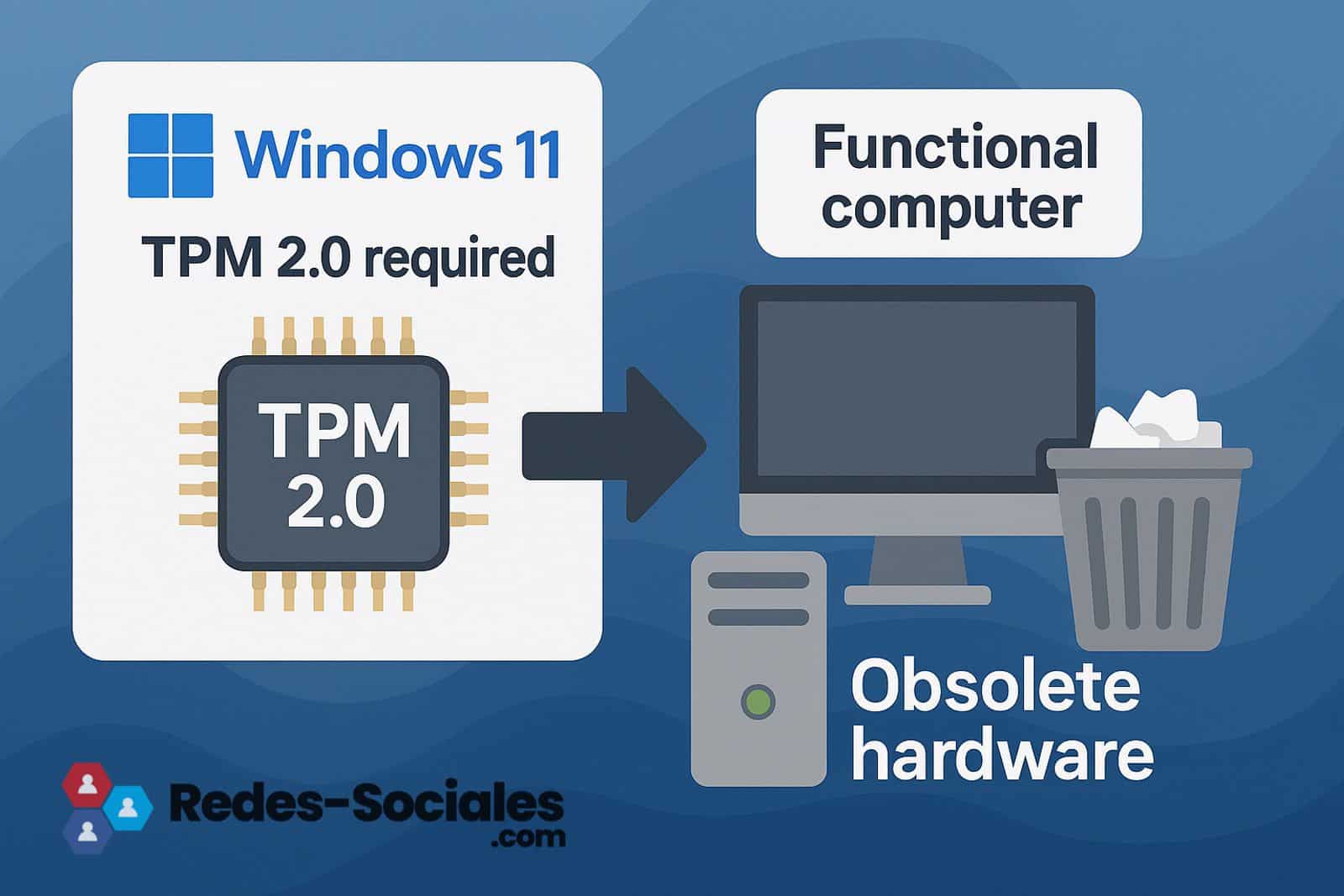Here’s the translation:
—
The requirement for TPM 2.0 and recent CPUs in Windows 11 is fueling the debate on security, planned obsolescence, and the real cost to businesses and cloud providers.
Historically, Microsoft has been a dominant player in the global enterprise ecosystem. However, its push to strengthen security with Windows 11 could have unintended consequences for businesses, MSPs, and cloud service providers. The decision to mandate the presence of the TPM 2.0 (Trusted Platform Module) chip and limit compatibility to recent processors poses an important dilemma: to what extent does this measure protect against cyber threats, and when does it start generating side effects in terms of costs, operational continuity, and sustainability?
TPM 2.0: Enhanced Security with Structural Impact
The TPM module acts as an isolated cryptographic processor within the system, fundamental for securing processes like secure boot (Secure Boot) or disk encryption (BitLocker). Its function is key to preventing manipulation of the operating system from boot and securely protecting credentials, private keys, and certificates.
From a business security perspective, the mandatory inclusion of TPM 2.0 aligns with a defense in depth strategy. Microsoft justifies this move as a direct response to the rise of sophisticated attacks, especially those exploiting the boot chain or injecting rootkits at the kernel level. Under this approach, a system without trusted hardware is considered intrinsically vulnerable.
The Hidden Cost for Businesses and MSPs
However, this decision has excluded a significant portion of the operational device pool, including enterprise-grade equipment less than five years old. This directly impacts:
- Companies with slow renewal policies or extended hardware lifecycle.
- Private or hybrid cloud infrastructure providers that use bare-metal nodes or virtual desktops incompatible with the new requirements.
- Integrators and MSPs managing mixed IT environments, especially in industrial or back-office settings where performance remains sufficient, but compatibility is broken due to a security specification.
From a financial perspective, replacing entire platforms for reasons of compatibility rather than technical capacity incurs unplanned and often avoidable operational expenses.
Planned Obsolescence or Justified Transition?
Former Microsoft engineers like Dave Plummer have publicly stated that this decision “prematurely condemns millions of devices to become electronic waste,” raising an uncomfortable debate: is this truly a security advance or a covert strategy to stimulate hardware renewal and benefit the OEM manufacturer channel?
Plummer, a developer during the Windows 95 era, warns that while hardware-based security is essential, the imposition of a requirement like TPM 2.0 as mandatory and without viable alternatives for advanced users or IT managers can be interpreted as a form of market control and forced product lifecycle segmentation.
Implications in Cloud and Virtualization Environments
Another relevant issue is the compatibility of virtual infrastructures, especially those not based on Azure. Although Azure already offers full support for virtual TPM (vTPM), many environments like VMware, Proxmox, Hyper-V, or KVM may require complex adjustments or updates to deploy virtual desktops with full support for Windows 11.
Moreover, some desktop services like DaaS (Desktop as a Service), hybrid VDI, or legacy infrastructure are affected by this new paradigm, where licenses are no longer sufficient: compatibility with virtual TPM 2.0 hardware is also required, complicating deployments that were previously straightforward.
Risks to IT Sustainability
The environmental impact is also significant. The enforcement of hardware requirements that exclude fully functional devices contributes to increasing the volume of electronic waste (e-waste) and accelerates the pace of technological renewal beyond what is necessary from an energy efficiency or responsible resource use perspective.
What Should Businesses Do?
In light of this situation, IT leaders, CISOs, and CTOs should consider:
- Auditing the pool of devices and virtual servers to identify equipment that will not be able to migrate to Windows 11.
- Evaluating the operational and financial impact of maintaining Windows 10 devices beyond 2025, when official support will end.
- Considering alternative systems like Linux on secondary workstations, VDI without Windows 11, or managed desktops with equivalent security layers.
- Exploring exceptions, vTPM solutions, and custom deployments that minimize costs without sacrificing security.
- Focusing on sustainability, extending the life of devices through tailored maintenance and virtualization policies.
Conclusion
Microsoft’s decision to require TPM 2.0 for installing Windows 11 aligns with a robust and proactive security vision. However, its implementation has significant collateral effects for the industry: increased costs for businesses, challenges in hybrid and virtualized cloud environments, exclusion of valid hardware, and the risk of accelerating technological waste generation.
The challenge now is to find a balance between moving toward a more secure ecosystem and preserving the operational and environmental viability of the existing technology pool. A discussion that has just begun.


